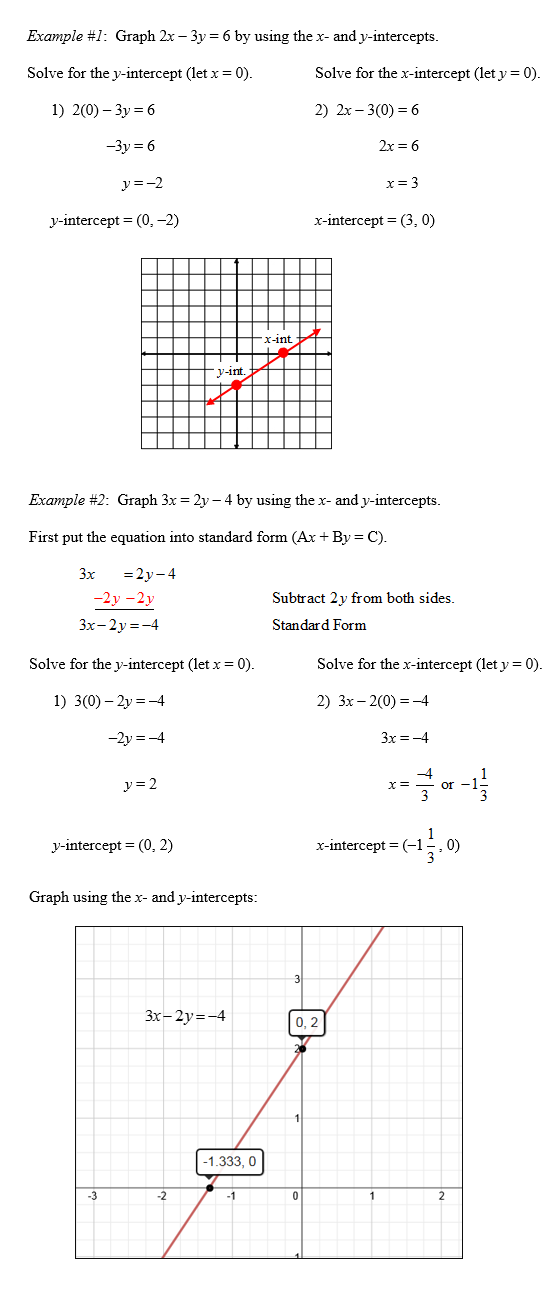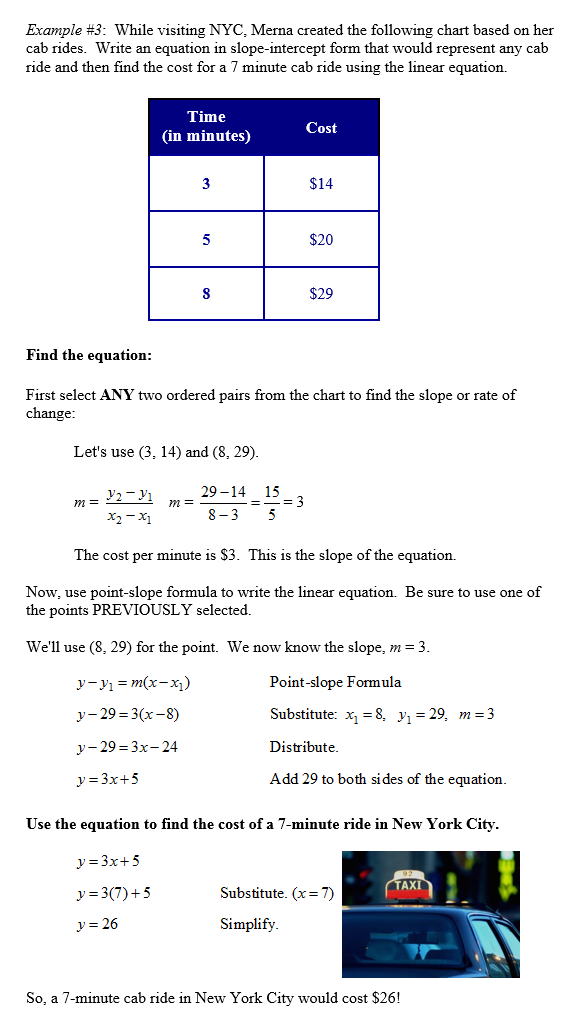LINEAR EQUATIONS AND GRAPHS
 |
Unit Overview
This unit is about linear equations and their graphs. In this unit, you will learn how to write equations of lines using the slope‑intercept form of a line and the point‑slope form. You will investigate transformations of the parent function, y = x, and learn how to graph linear equations in standard form using the x- and y-intercepts. You will take a closer look at horizontal and vertical lines. The unit will conclude with a discussion of the equations and graphs of parallel lines and perpendicular lines.
Slope-Intercept Form
 |
 |
|
 |
Stop! Go to Questions #1-6 about this section, then return to continue on to the next section.
Parent Functions and Transformations
 |
Use a graphing calculator or knowledge from above to answer the below questions. Also, there is a graphing program online at Desmos | Graphing Calculator.
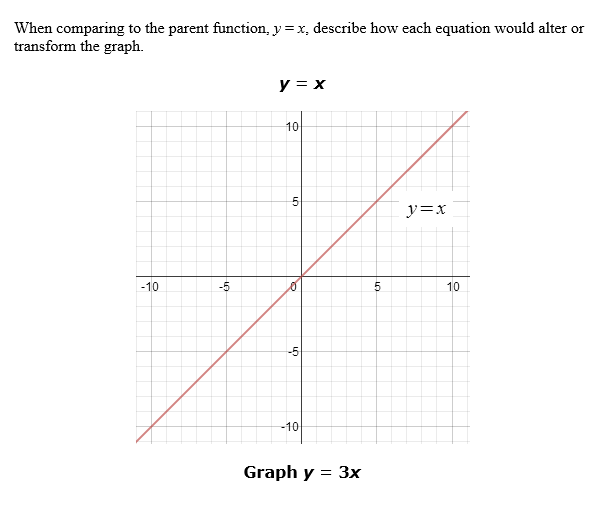 |
![]() Describe the translation for y = 3x from the parent function y = x.
Describe the translation for y = 3x from the parent function y = x.
The steepness of the line (slope) will change from m = 1 (1/1) to m = 3 (3/1).
"Click here" to check the answer.
![]() How does the y-intercept change?
How does the y-intercept change?
The y-intercept remains 0. The graph passes through (0, 0).
"Click here" to check the answer.
![]() View the graphs.
View the graphs.
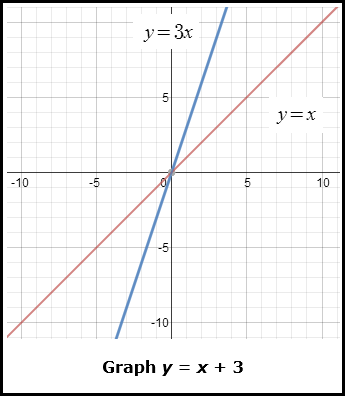
"Click here" to view both graphs.
![]() Describe the translation for y = x + 3 from the parent function y = x.
Describe the translation for y = x + 3 from the parent function y = x.
The graph is translated 3 units up and passes through the y-axis at (0, 3).
"Click here" to check the answer.
![]() How does the slope change?
How does the slope change?
The slope (m = 1) remains the same (rise / run = 1 / 1).
"Click here" to check the answer.
![]() How does the y-intercept change?
How does the y-intercept change?
The y-intercept changes from (0, 0) to (0, 3).
"Click here" to check the answer.
![]() View the graphs.
View the graphs.
![]() Describe the translation for y = –x from the parent function y = x.
Describe the translation for y = –x from the parent function y = x.
The slope of the line is now negative and goes through Quadrants II and IV.
"Click here" to check the answer.
![]() Describe one way to count out the slope (rise / run) of the graph.
Describe one way to count out the slope (rise / run) of the graph.
The rise over run is down 1, then right one.
"Click here" to check the answer.
![]() Describe a second way to count out the slope (rise / run) of the graph.
Describe a second way to count out the slope (rise / run) of the graph.
The rise over run is up 1, then left 1.
"Click here" to check the answer.
![]() How does the y-intercept change?
How does the y-intercept change?
The y-intercept remains 0. The graph passes through (0, 0).
"Click here" to check the answer.
![]() View the graphs.
View the graphs.
![]() Describe the translation for y = 2x – 5 from the parent function y = x.
Describe the translation for y = 2x – 5 from the parent function y = x.
The graph is translated 5 units down and the slope becomes steeper.
"Click here" to check the answer.
![]() How does the slope change?
How does the slope change?
The steepness of the line (slope) changes from m = 1 (1/1) to m = 2 (2/1).
"Click here" to check the answer.
![]() How does the y-intercept change?
How does the y-intercept change?
The y-intercept changes from (0, 0) to (0, –5).
"Click here" to check the answer.
![]() View the graphs.
View the graphs.
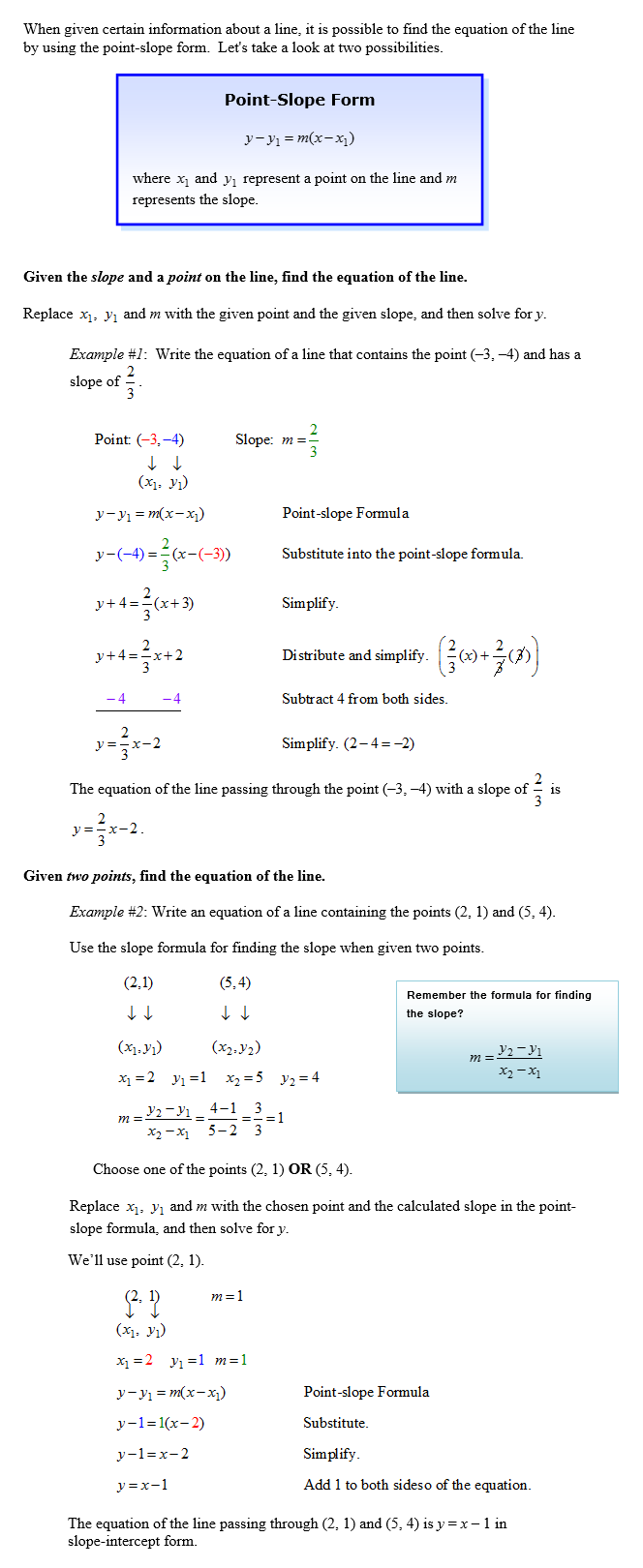
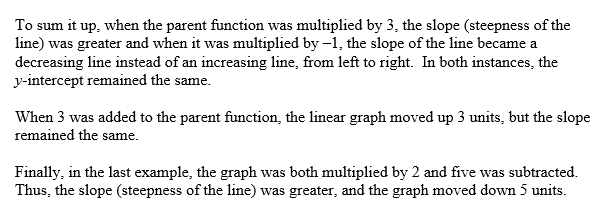 |
Stop! Go to Questions #7-10 about this section, then return to continue on to the next section.
Graphing a Line Using the x- and y-intercepts
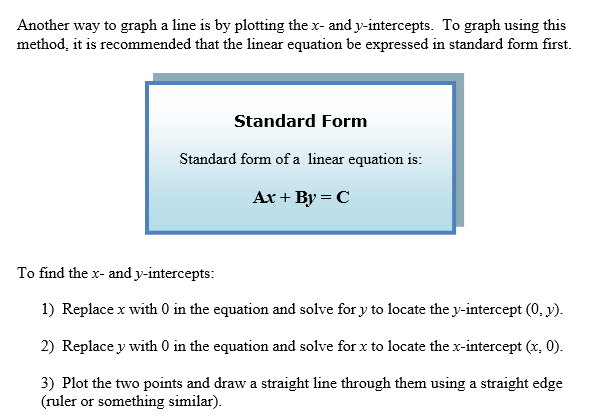 |
|
|
Stop! Go to Questions #11-15 about this section, then return to continue on to the next section.
Point-Slope Form
 |
![]() What would the equation look like in standard form?
What would the equation look like in standard form?
–x + y = –1
"Click here" to check the answer.
![]() The equation could be transformed into an equivalent equation in simpler form by multiplying both sides by –1. What would that equation look like?
The equation could be transformed into an equivalent equation in simpler form by multiplying both sides by –1. What would that equation look like?
x – y = 1
"Click here" to check the answer.
|
Stop! Go to Questions #16-20 about this section, then return to continue on to the next section.
Equations of Horizontal and Vertical Lines
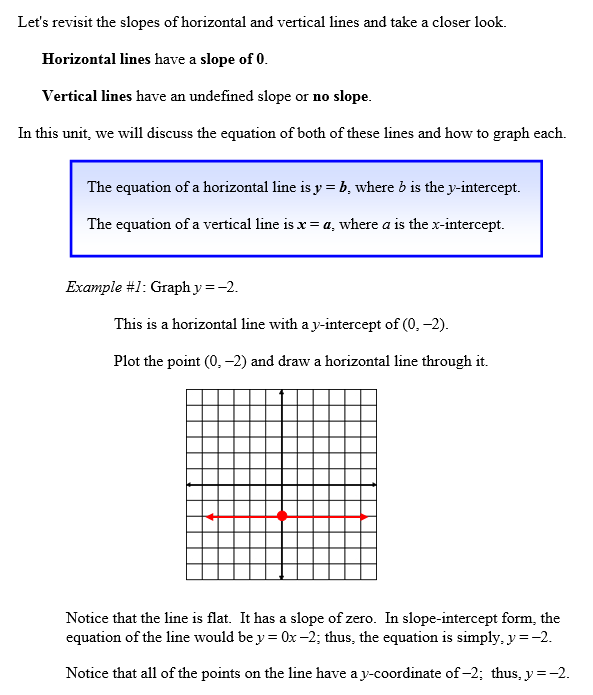 |
![]() What are the coordinates of a few points on this line?
What are the coordinates of a few points on this line?
Sample Answer: (0, –2), (–5, –2), (3, –2), (100, –2)
"Click here" to check the answer.
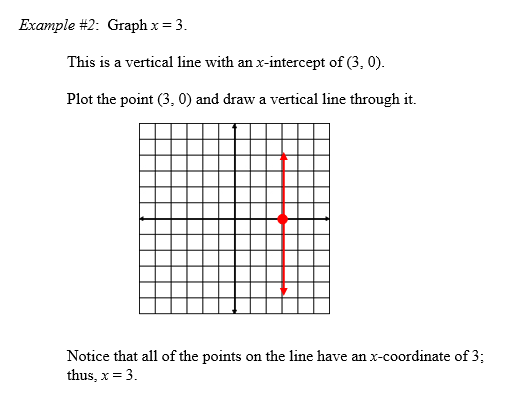 |
![]() What are the coordinates of a few points on this line?
What are the coordinates of a few points on this line?
Sample Answer: (3, 0), (3, –4), (3, 10), (3, –1000)
"Click here" to check the answer.
Stop! Go to Questions #21-25 about this section, then return to continue on to the next section.
Parallel and Perpendicular Lines
 |
Stop! Go to Questions #26-32 to complete this unit.
